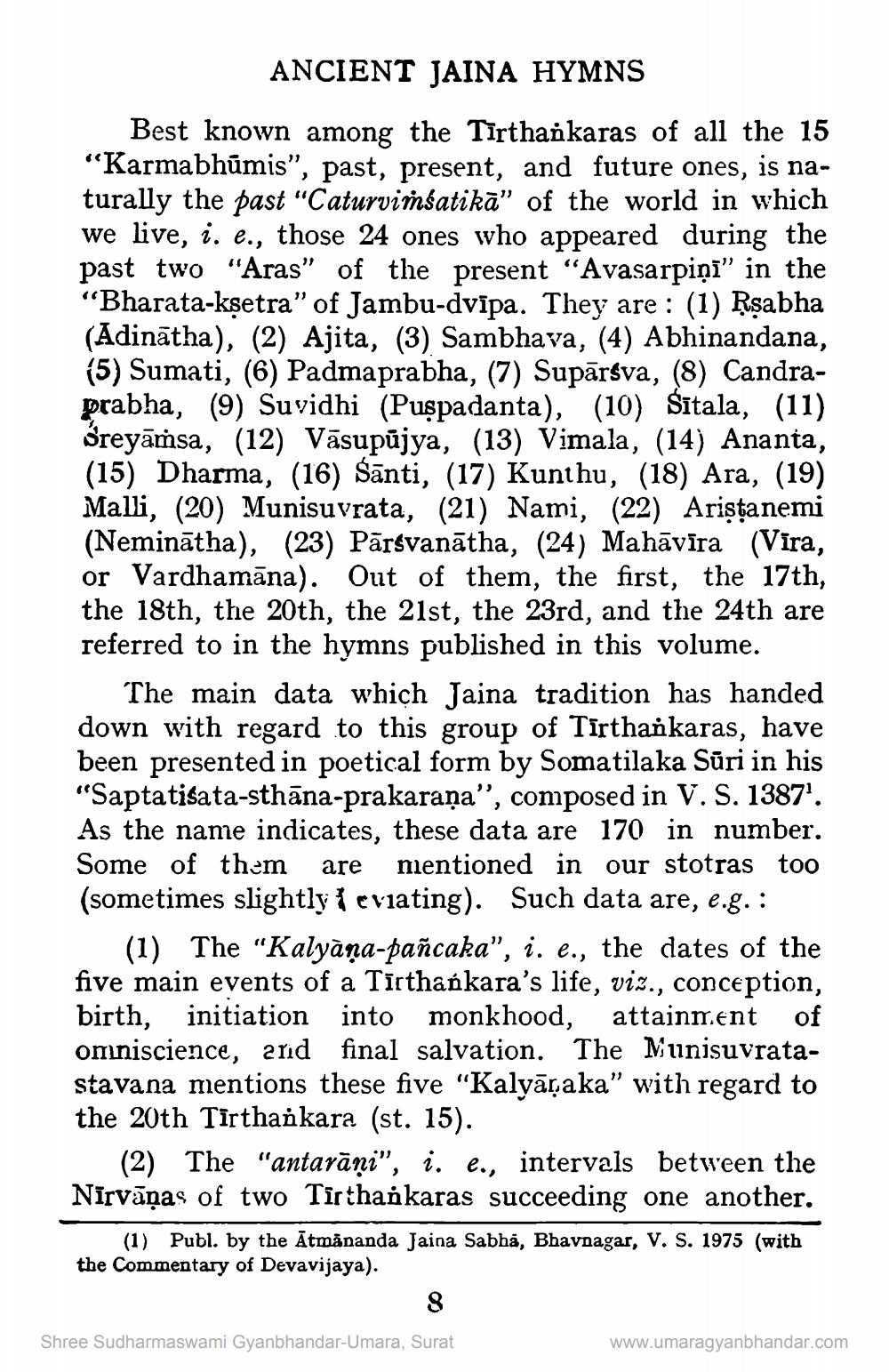________________
ANCIENT JAINA HYMNS
Best known among the Tīrthankaras of all the 15 "Karmabhūmis”, past, present, and future ones, is naturally the past "Caturviisatikā" of the world in which we live, i. e., those 24 ones who appeared during the past two "Aras" of the present "Avasarpiņi” in the “Bharata-kşetra" of Jambu-dvīpa. They are : (1) Rşabha (Adinātha), (2) Ajita, (3) Sambhava, (4) Abhinandana, (5) Sumati, (6) Padmaprabha, (7) Supārsva, (8) Candraprabha, (9) Suvidhi (Puspadanta), (10) Šītala, (11) Greyāṁsa, (12) Vāsupūjya, (13) Vimala, (14) Ananta, (15) Dharma, (16) Śānti, (17) Kunthu, (18) Ara, (19) Malli, (20) Munisuvrata, (21) Nami, (22) Aristanemi (Neminātha), (23) Pārsvanātha, (24) Mahāvīra (Vira, or Vardhamāna). Out of them, the first, the 17th, the 18th, the 20th, the 21st, the 23rd, and the 24th are referred to in the hymns published in this volume.
The main data which Jaina tradition has handed down with regard to this group of Tirthankaras, have been presented in poetical form by Somatilaka Sūri in his “Saptatisata-sthāna-prakaraña”, composed in V. S. 1387'. As the name indicates, these data are 170 in number. Some of them are mentioned in our stotras too (sometimes slightly reviating). Such data are, e.g.:
(1) The "Kalyāņa-pañcaka", i. e., the dates of the five main events of a Tīrthańkara's life, viz., conception, birth, initiation into monkhood, attainment of omniscience, and final salvation. The Munisuvratastavana mentions these five "Kalyaraka" with regard to the 20th Tīrthankara (st. 15).
(2) The "antarāni", i. e., intervals between the Nīrvāṇas of two Tirthankaras succeeding one another.
(1) Publ. by the Ātmånanda Jaina Sabha, Bhavnagar, V. S. 1975 (with the Commentary of Devavijaya).
Shree Sudharmaswami Gyanbhandar-Umara, Surat
www.umaragyanbhandar.com




